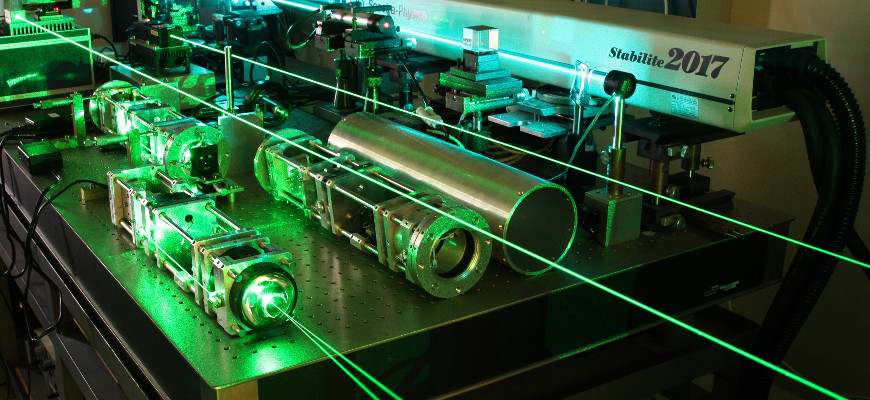Laser applications and optical measurement techniques Research Group

Group leader: Nagy Attila Tibor
Publications of the group: link to the database of the Hungarian Scientific Bibliography
Aerosol drug delivery/deposition in human lungs. — The MMAD (mass median aerodynamic diameter) of the Symbicort® Turbuhaler dry powder inhaler (DPI) and the aerosol particle deposition in the upper airways was studied in case of different inhalation waveforms. For the detection of the aerosol size distribution, the Aerosol Particle Sizer (APS) Spectrometer was used. The effect of the breathing pattern on the MMAD was determined after the upper airways. With the help of the stochastic lung deposition model (SLDM), the amount of deposited particles in the lung was quantified. It was found that approximately 10% of the particles from the DPI deposit in the upper airways. The lung deposition of the drug from the DPI was calculated to be between 18 and 63% of the nominal dose, depending on the inhalation time and the peak inhalation flow. Vibrational (Raman and infrared) spectroscopy based methods have been developed to determine the distribution of inhalation drugs (and other aerosols) in human airway replicas. The tested medication was introduced by metered dose inhaler into a realistic human lung tract prepared by 3D printing from computer tomographic data of human respiratory system. The deposited material was collected with silicon substrates attached to the hollow airway’s walls in different points. The analysis of the substrates was performed by Raman and infrared spectroscopic mapping of drug’s characteristic peak intensities over the surface. The method was verified by comparison with optical microscopic images recorded on the same surface area.
Study of optical properties of aerosols. — We have participated in the A-LIFE ERC project of the University of Vienna with PI Prof. Bernadett Weinzierl. The project is aimed at investigating the properties of absorbing aerosols (in particular mineral dust – black carbon (BC) mixtures) to characterize the aging and mixing of light-absorbing aerosol layers during their lifetime, to assess the contribution of individual aerosol components, in particular mineral dust and BC to the radiative forcing (RF) of mixed absorbing aerosol layers, to implement complex particle morphologies in RF estimates, and to investigate potential links between the presence of absorbing particles, aerosol layer lifetime and removal. We participated in the project by applying an optical method for the measurement of the optical and physical properties of ambient aerosols, which was developed by us in cooperation with the University of Vienna.
Optical thin film structures for advanced ultrafast applications. — We have continued our research concerning the development of optical thin film structures (high reflectors, output couplers, beam splitters, triple-band antireflective coatings etc.) for advanced femtosecond laser sources producing energetic light pulses in the near- and middle-infrared wavelength ranges. We have produced successfully sampling beam splitters on sapphire substrates for the French company Fastlite, working perfectly in their MIR laser system installed at ELI ALPS in Szeged already. We have developed new type of negative- or zero-dispersion multilayer mirror structures for our Japan partner also. The new laser mirror structures developed by us are very important in the development of new ultrafast high-power lasers which are able to shift the limits of the higher harmonic generation from the soft X-ray range to the hard X-ray range.
Optical measurement techniques serving the development of medical laser systems. — We have been involved in a project where the participants conduct research and development activities aiming at developing prototype instruments for medical surgery applications based on ultrashort pulse and fibre lasers. We have studied the light scattering and absorption properties of model tissue materials using different lasers and detection techniques. We have studied the surgical smoke that is generated upon the interaction of intense laser light and model tissue materials. In the frame of this study, we measured the size distribution of the surgical smoke with optical particle counter, aerodynamic particle counter and condensation particle counter, we measured the spread of the generated aerosols using laser Doppler anemometer, and collected samples with a cascade impactor for further analysis.
Results 2024; 2017-2023



